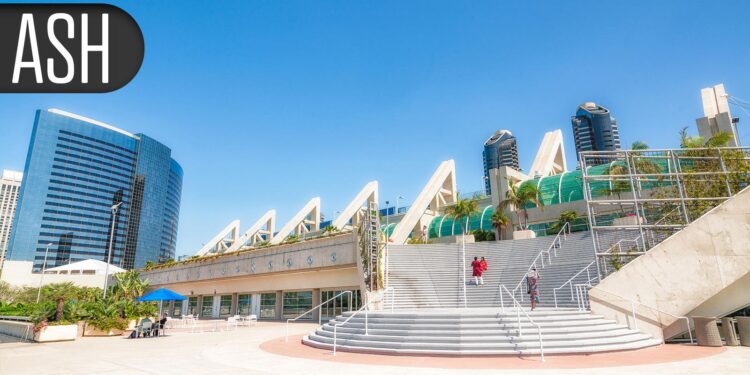SAN DIEGO — The risk of progression from smoldering multiple myeloma to symptomatic disease decreased by 50% in patients treated with the anti-CD38 monoclonal antibody daratumumab (Darzalex), according to a study reported here.
The progression-free survival (PFS) rate at 5 years improved from 40.8% with active monitoring and no disease-specific treatment to 63.1% with a 3-year course of daratumumab. The median time to progression had yet to be reached in the daratumumab arm versus 41.5 months in the control group.
The benefit was consistent across all risk groups but was greatest among patients who had the highest baseline risk of progression to multiple myeloma, reported Meletios Dimopoulos, MD, of the National and Kapodistrian University of Athens in Greece, at the American Society of Hematology annual meeting.
“During the follow-up period, there was a continuous improvement in favor of the daratumumab arm,” Dimopoulos said during a press briefing. “Despite that the treatment was discontinued at 3 years, even at 5 or 6 years, there was a continuous benefit from treatment with daratumumab. Daratumumab prolonged PFS2, meaning the time from daratumumab treatment to progression after frontline therapy for myeloma, and it also improved overall survival [OS].”
“This treatment was very well tolerated,” he added. “We believe that with these data, patients with high-risk smoldering myeloma may benefit from immediate treatment with daratumumab and that observation for this particular subset of patients may not be an adequate option.”
Controversial Issue
Treatment of smoldering myeloma, versus active follow-up, remains controversial, noted press briefing moderator Surbhi Sidana, MD, of Stanford University in California. Within the context of the ongoing debate, daratumumab offers a reasonably well-tolerated therapy that can prolong time to progression. However, the control group had a median time to progression of almost 4 years.
“So, are we overtreating some patients?” she asked. “If you recommend treatment, which subgroup of patients should we be treating? Because how we defined high risk for the AQUILA trial [designed in 2015] is not how we define high risk now.”
Dimopoulos replied, “The greatest benefit was for the high-risk patients that are defined by standard criteria, so I believe that is the subset of patients that benefit most. The other issue is that until now, there is no approved treatment for patients with smoldering myeloma. I believe it is important to have an approved therapy and then the physician and the patient can make a joint decision whether they will get the treatment or very close follow-up.”
The highest-risk subgroup had a median time to progression of 21 months, he added. “So, I believe this is the subset that clearly benefits. As far as what type of treatment is concerned, I believe this depends on the patient’s age, comorbidities, life expectancy, desire [for treatment].”
Choice of treatment is being addressed in ongoing trials aimed at delaying progression and at disease eradication, he said.
Key Results, Reaction
Though asymptomatic, the smoldering myeloma population comprises a subset of patients with a high risk of end-organ damage and progression to multiple myeloma. Several studies have suggested that treatment may benefit patients at high risk of progression, including a recent evaluation of lenalidomide (Revlimid) and a trial of daratumumab in patients with intermediate- and high-risk smoldering myeloma.
Dimopoulos reported primary findings from the AQUILA trial, “the largest randomized, phase III study of a well-defined population with smoldering myeloma to assess the impact of early intervention on prevention of end-organ damage and progression to multiple myeloma.” Eligible patients had confirmed smoldering myeloma by International Myeloma Working Group criteria for ≤5 years.
The trial was designed to include high-risk patients, but standards for risk assessment have changed several times since enrollment began in 2017, Dimopoulos pointed out. Eligible patients had clonal bone marrow plasma cells (BMPCs) ≥10%, plus at least one risk factor: serum M protein ≥30 g/L, IgA smoldering myeloma, immunoparesis with reduction of two uninvolved Ig isotypes, serum involved:uninvolved free light chain ratio ≥8 and 100, and BMPCs >50% but
Patients were randomized to subcutaneous daratumumab administered over 28-day cycles for 36 months or to active monitoring with no disease-specific treatment. Assigned treatment continued until progression by SLiM-CRAB criteria. The primary endpoint was PFS by independent review. Secondary endpoints included response rate, time to first-line treatment for multiple myeloma, PFS on first-line treatment for myeloma (PFS2), and OS.
The study included 390 randomized patients. Median time from diagnosis of smoldering myeloma to enrollment was less than a year. By Mayo Clinic 2018 risk criteria, 75-80% of patients had intermediate- or high-risk disease.
The primary analysis showed that treatment with daratumumab was associated with a 51% reduction in the hazard ratio of progression to active myeloma (95% CI 0.36-0.67, P
Grade 3/4 treatment-emergent adverse events (TEAEs) occurred in 40.4% of the daratumumab arm versus 30.1% of the control group. The most common grade 3/4 TEAE in both groups was hypertension (5.7% vs 4.6%, respectively). Serious TEAEs occurred in 29% of the daratumumab group and 19.4% of the control group, the most common being pneumonia (3.6% vs 0.5%). Two patients in the daratumumab group and four in the control arm had fatal TEAEs. Eleven patients (5.7%) in the daratumumab arm discontinued treatment because of TEAEs.
The findings further emphasized the need to identify high-risk patients who benefit most from treatment, said Sidana.
“Most people still don’t treat smoldering myeloma,” she told MedPage Today. “Even expert myeloma physicians have concerns about what we are actually achieving with these patients. If we can cure a proportion of patients, then that moves the needle forward. If we can prevent many of these patients from getting renal failure or pathologic fractures, then that moves the needle.”
“I think there is a subset of patients, a small proportion, who will progress within a year or 18 months,” Sidana continued. “I think those are the patients we need to identify, and those are the patients [who need intervention] … This is a good proof-of-concept study, but I don’t think, personally, that we need to treat all of the patients who were included in this study.”
Disclosures
The AQUILA study was supported by Janssen.
Dimopoulos disclosed relationships with Amgen, Sanofi, Regeneron, Menarini, Takeda, GSK, Bristol Myers Squibb, Janssen, BeiGene, Swixx, and AstraZeneca.
Sidana disclosed relationships with Kite, Bristol Myers Squibb, Janssen, Sanofi, Oncopeptides, Takeda, Regeneron, AbbVie, Pfizer, BiolineRx, Legend, and Novartis.
Primary Source
American Society of Hematology
Source Reference: Dimopoulos MA, et al “Phase III randomized study of daratumumab monotherapy versus active monitoring in patients with high-risk smoldering multiple myeloma: Primary results of the AQUILA study” ASH 2024; Abstract 773.
Source link : https://www.medpagetoday.com/meetingcoverage/ashhematology/113286
Author :
Publish date : 2024-12-09 16:02:06
Copyright for syndicated content belongs to the linked Source.


![author['full_name']](https://newshealth.biz/wp-content/uploads/2024/12/Treatment-of-Smoldering-Myeloma-Cuts-Progression-Rate-in-Half.jpg)












